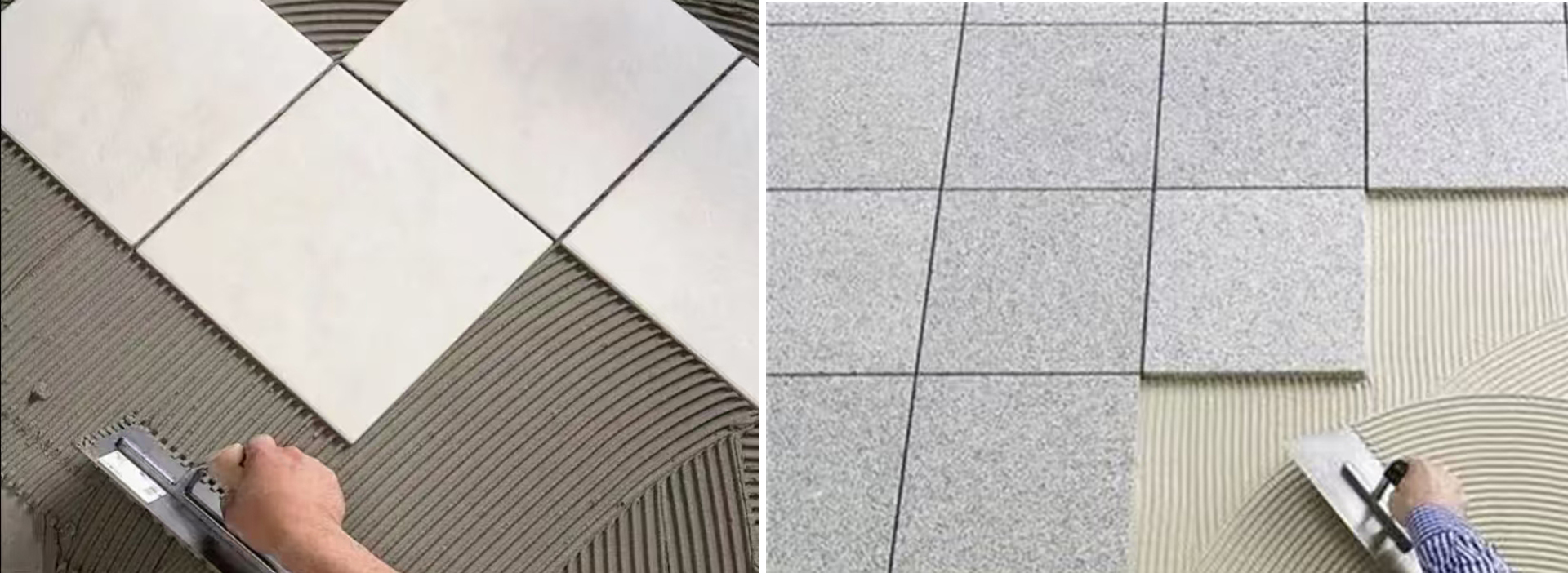Difference Between Tile adhesive and tile back glue
Mar 04, 2025
Tile adhesive and tile back glue are two essential products in tile installation, but they have distinct differences, advantages, and disadvantages.
Differences

[Composition]
Tile Adhesive: Usually, tile adhesive is a cement - based product. It mainly consists of cement, sand, and various additives. These components are formulated to create a strong binding agent for tiles.
Tile Back Glue: Tile back glue is typically a polymer - based adhesive. It is made from synthetic polymers, such as acrylic polymers, which provide a different type of bonding mechanism compared to tile adhesive.
[Application Method]
Tile Adhesive: Tile adhesive is applied directly to the substrate (wall or floor) using a notched trowel. The tiles are then pressed into the adhesive.
Tile Back Glue: Tile back glue is applied to the back of the tile. After applying the back glue, the tile is left to dry for a certain period (usually a few hours) until it reaches a tacky state. Then, the tile can be installed using tile adhesive or mortar.
[Function]
Tile Adhesive: Its main function is to bond the tile to the substrate. It provides the primary adhesion force and helps to distribute the weight of the tile evenly across the substrate.
Tile Back Glue: Tile back glue is used to improve the adhesion between the tile and the tile adhesive or mortar. It is especially useful for tiles with smooth or non - porous surfaces, as it can enhance the bond strength.
Advantages and Disadvantages

Tile Adhesive
Advantages
High Load - Bearing Capacity: Due to its cement - based composition, tile adhesive can support the weight of heavy tiles well. It is suitable for large - format tiles and tiles used in high - traffic areas.
Good Compatibility: It can be used with a wide range of substrates, including concrete, cement board, and some types of plasterboard.
Cost - Effective: In general, tile adhesive is relatively cost - effective, especially for large - scale tile installation projects.
Disadvantages
Limited Adhesion on Some Surfaces: It may not adhere well to smooth or non - porous surfaces, such as some types of glass tiles or highly polished porcelain tiles.
Longer Drying Time: Cement - based tile adhesives usually require a longer drying time, which can delay the construction process.
Tile Back Glue
Advantages
Enhanced Adhesion: Tile back glue significantly improves the adhesion of tiles, especially those with surfaces that are difficult to bond. It can prevent tile - falling problems.
Fast Drying: Polymer - based tile back glue usually dries faster compared to tile adhesive, which can speed up the installation process.
Flexibility: It has better flexibility than tile adhesive, which can accommodate some movement in the substrate or tile without cracking the bond.
Disadvantages
Higher Cost: Tile back glue is generally more expensive than tile adhesive. This can increase the overall cost of the tile installation project.
Narrower Application Range: It is mainly used to enhance the adhesion of specific types of tiles, so its application range is more limited compared to tile adhesive.
Summary:
Ceramic tile adhesive and ceramic tile backing adhesive play important roles in modern architecture and decoration. Ceramic tile adhesive is suitable for the installation of various ceramic tiles, stone materials, and different substrates. It has the advantages of strong adhesion and easy construction, but the cost is high and the substrate requirements are high. Ceramic tile adhesive is mainly used for the installation of large-sized, low water absorption ceramic tiles, which can significantly enhance the bonding strength and is suitable for humid environments. However, the construction is more complex and the cost is higher.

